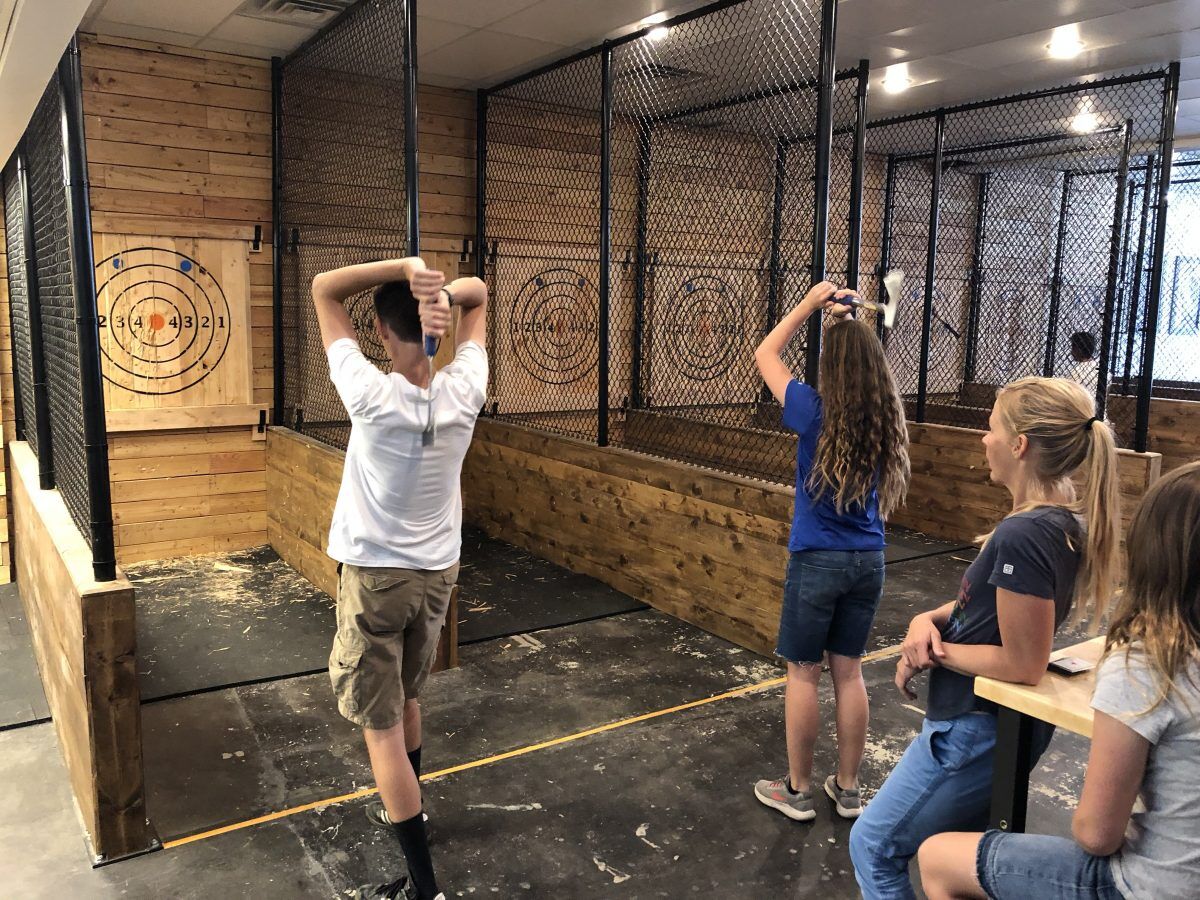Make Memories at Denver Axe Throwing: Tips for an Enjoyable Trip
Make Memories at Denver Axe Throwing: Tips for an Enjoyable Trip
Blog Article
The Enjoyable of Axe Throwing: Just How This Sporting Activity Integrates Skill and Adrenaline for a Great Time
Axe throwing has actually become a mesmerizing sport that masterfully links the need for accurate ability with the thrill of adrenaline, offering individuals a appealing and unique experience. The act of hurling an axe towards a target requires concentration and technique, concurrently fostering an ambience of friendship and friendly competition. This appealing blend of mental emphasis and physical exertion has actually made axe tossing a popular selection for those looking for both entertainment and a sense of achievement. To genuinely appreciate the deepness and appeal of this task, one should consider its origins, the essential equipment, and the foundational strategies that guarantee both safety and security and satisfaction.
The Origins of Axe Throwing
Axe throwing, a leisure task that has acquired significant appeal in recent times, traces its origins back to old times. This primitive sporting activity go back to early human background, when axes were mainly utilized as weapons and devices. The earliest records of axe use in affordable contexts are located amongst the Celts and Vikings, who threw axes for sport in addition to in fight training. The method was not simply an activity but a vital skill for survival and warfare.
Middle ages European warriors, especially during the Center Ages, exercised axe tossing as component of their martial training. The Francisca, a kind of tossing axe utilized by the Franks, became famous for its dangerous precision. This typical weapon was developed to be thrown at adversary guards and shield, showcasing its twin utility in both sport and fight.
In more recent history, axe throwing saw a resurgence in the logging camps of The United States and copyright in the 19th and 20th centuries. Lumberjacks would engage in pleasant competition, examining their accuracy and strength by focusing on wood targets. This evolution from a survival skill to a leisure task has led the way for its modern renewal, with committed locations and organizations now commemorating the sporting activity globally.
Equipment You Required
Comprehending the rich history of axe tossing improves the appreciation of the sporting activity's modern version. For affordable and entertainment axe throwing, the most frequently utilized type is the hatchet, normally weighing between 1.25 to 2 pounds with a handle size of around 16 inches.
Similarly important is the target. Regulation targets are created from timber, with softwood varieties like yearn or cottonwood being preferred for their capability to take in and hold the axe. The target is typically split right into five concentric circles, each with a specific point value, to promote scoring.
Safety and security gear, though often ignored, is important. Protective handwear covers can boost grip and prevent blisters, while closed-toed shoes are a should to secure feet from dropped axes (ax throwing denver). A well-lit, roomy throwing location, complete with security barriers, guarantees a controlled setting where participants can concentrate on developing their abilities.
Basic Techniques Explained
Understanding the fundamental techniques of axe throwing is essential for both safety and proficiency. The leading hand should be positioned straight listed below the axe head, while the non-dominant hand sustains the end of the deal with.
Your leading foot should be a little onward, lining up with your target. This positioning aids in keeping security and directing power accurately in the direction of the target.

Safety First
Making certain security in axe throwing is vital to developing a enjoyable and injury-free experience. A well-designed axe throwing facility features clear demarcations in between tossing lanes, durable backdrops to capture roaming axes, and non-slip floor covering to avoid accidents.
Advantages of Axe Throwing
Axe throwing offers a myriad of benefits that extend beyond simple entertainment. The repetitive motion of tossing the axe additionally boosts hand-eye control and fine motor abilities.
Psychologically, axe tossing needs emphasis, precision, and strategy, making it an exceptional method to hone cognitive abilities. The focus needed to hit the target can work as a kind of mindfulness, enabling individuals to remove their minds and reduce stress. This mental involvement can be specifically advantageous in aiding people establish far better analytical abilities and psychological strength.
Socially, axe throwing is usually enjoyed in team settings, promoting team-building and friendship. Whether as component of a company occasion or an informal getaway with buddies, the sport encourages communication and partnership. Furthermore, the common experience of discovering and improving together can enhance partnerships and develop enduring memories.
Verdict

The earliest documents of axe usage in competitive contexts are located amongst the Celts and Vikings, that threw axes for sport as well as in fight training. Launch the axe when your hands are about at eye level, allowing the axe's all-natural rotation to guide it towards the target.
A properly designed axe throwing facility functions clear demarcations in between tossing lanes, durable backdrops to catch stray axes, and non-slip flooring to protect against crashes. Individuals have to be instructed on the right method to deal with and toss the axe, stressing managed, calculated activities over powerful throws.
In summary, axe throwing stands out as a sporting activity that masterfully incorporates precision, adrenaline, and ability.
Report this page